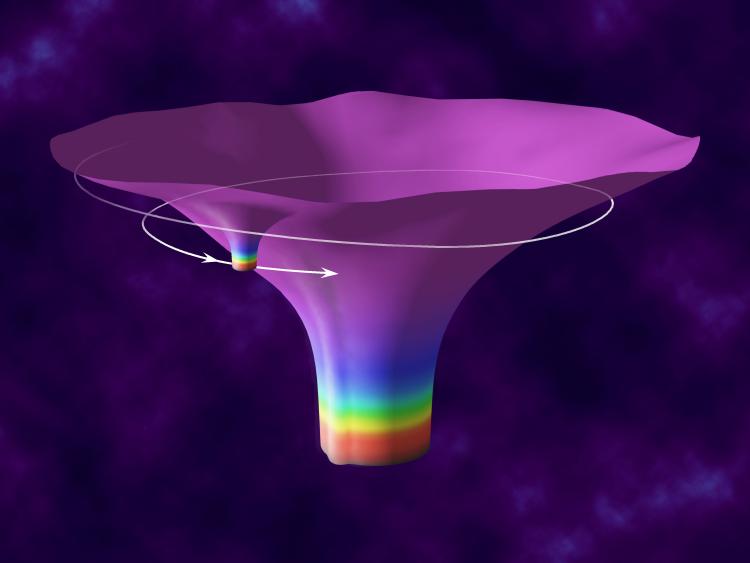LISA Special Exhibit
General Relativity
By making precise measurements of gravitational waves, astronomers will be able to test the predictions of Einstein's theory of general relativity. Scientists want to know, "Does time really freeze near a black hole? How stretched-out is spacetime when we get close to a huge mass?"

Simulation of the spacetime distortions from a small solar mass black hole spiraling into a large supermassive black hole. This situation may be common in the center of galaxies. (Credit: NASA)
One class of source that LISA will use to study general relativity are small black holes orbiting giant black holes. These sources are called Extreme Mass Ratio Inspiral sources, or EMRI sources for short. Most, if not all, large galaxies have a supermassive black hole at their center and many stars that orbit it. As those stars age, some will become supernovae and leave behind a small black hole with a mass of 1 to 10 times that of the sun. That small black hole will emit gravitational waves as it orbits the supermassive black hole. Over time, the small black hole will move closer to the central black hole, and the gravitational wave signal will grow.
By observing the gravitational waves scientists will be able to trace out the path, and therefore the gravitational field around the central black hole. General relativity predicts the form of the gravitational field around that black hole, so scientists can test general relativity by making detailed comparisons between the observed path and the theory.
Published: August 2003
Text Reviewed: September 2018


